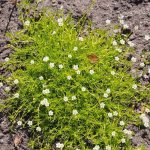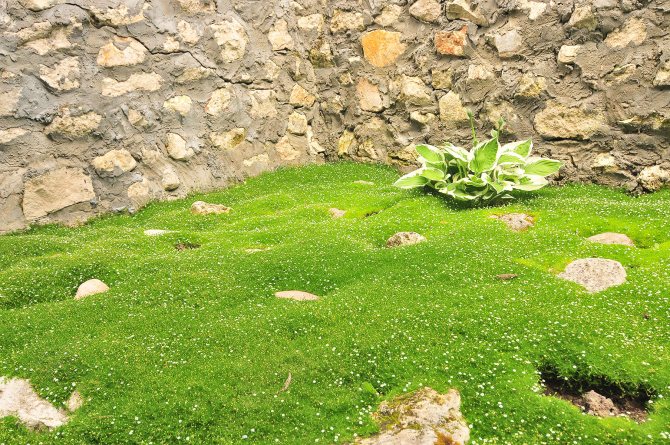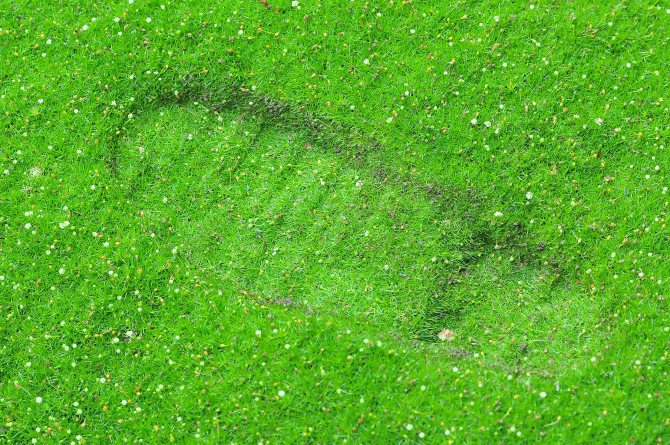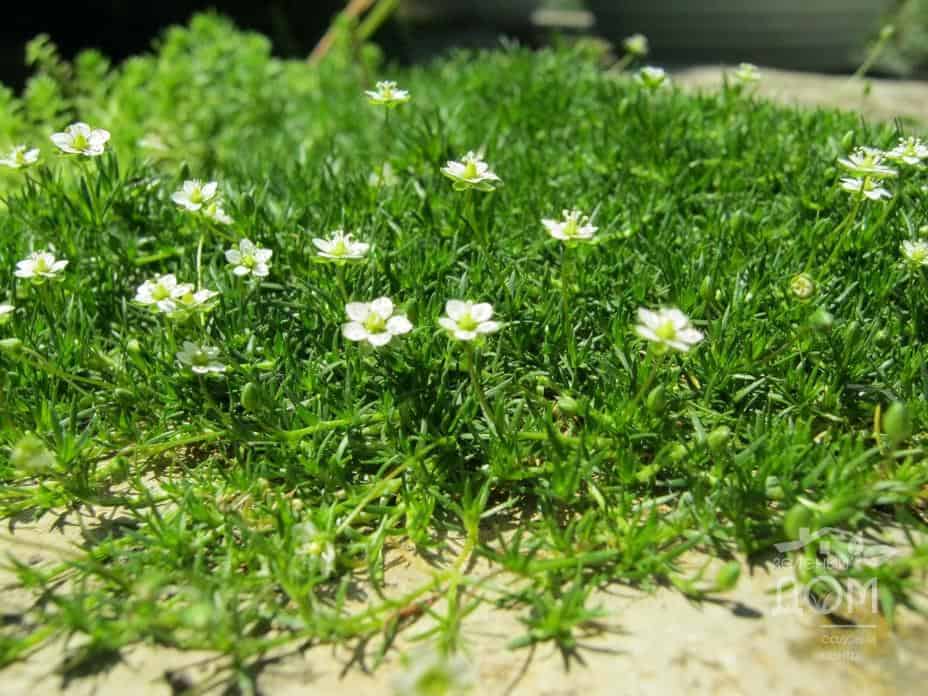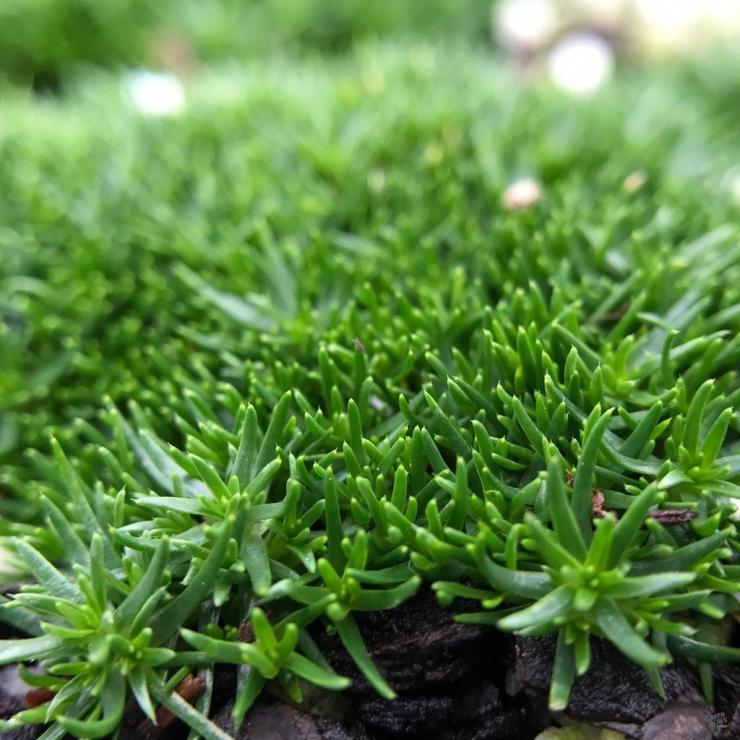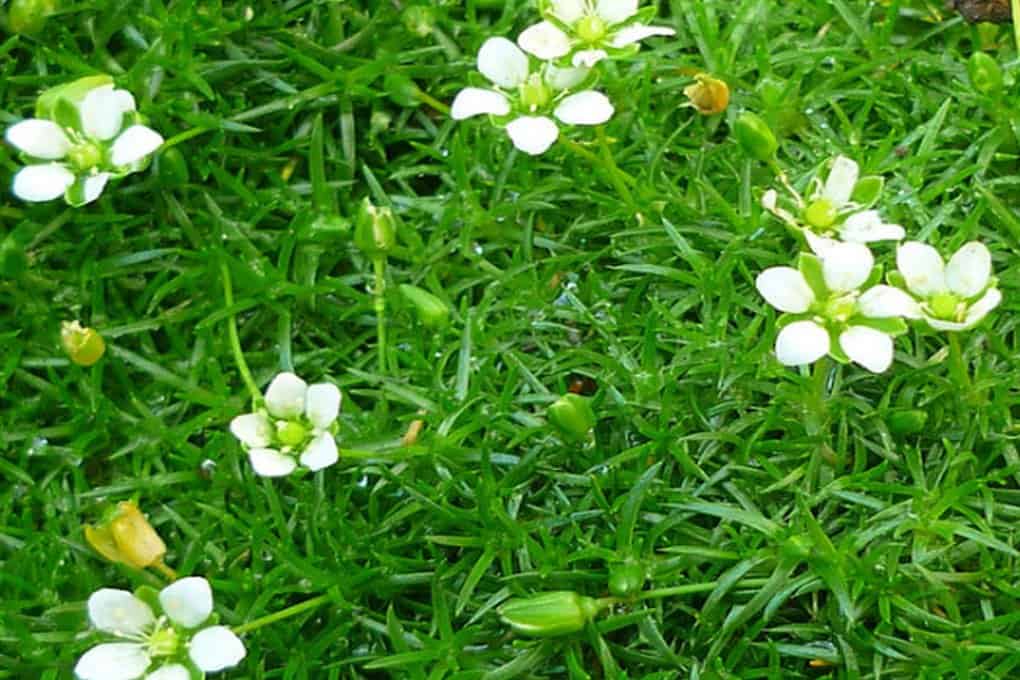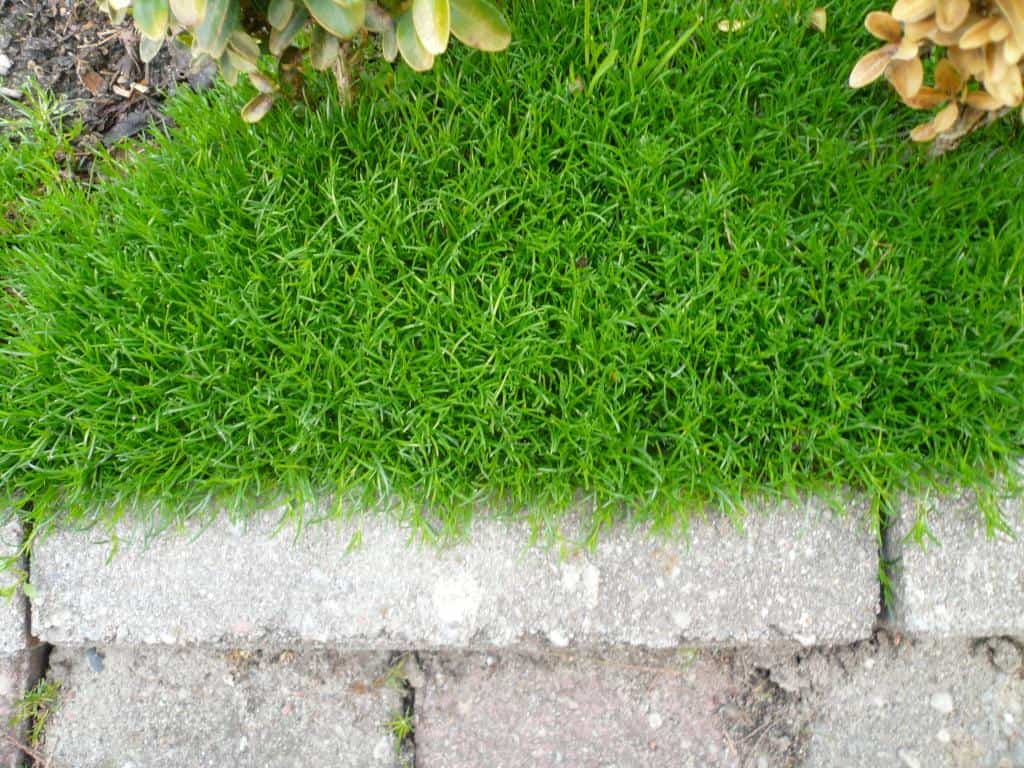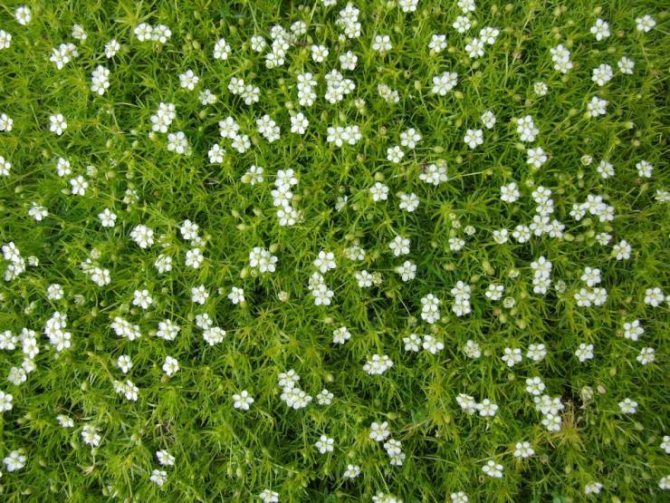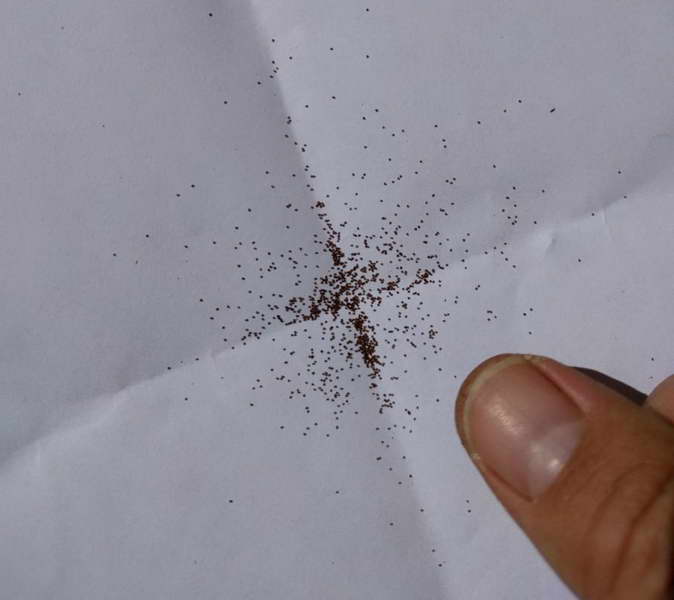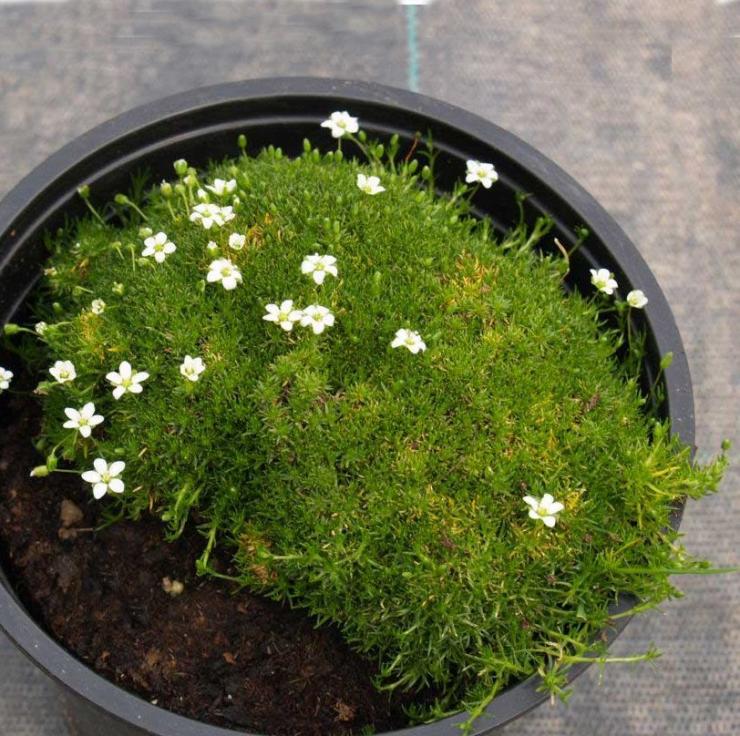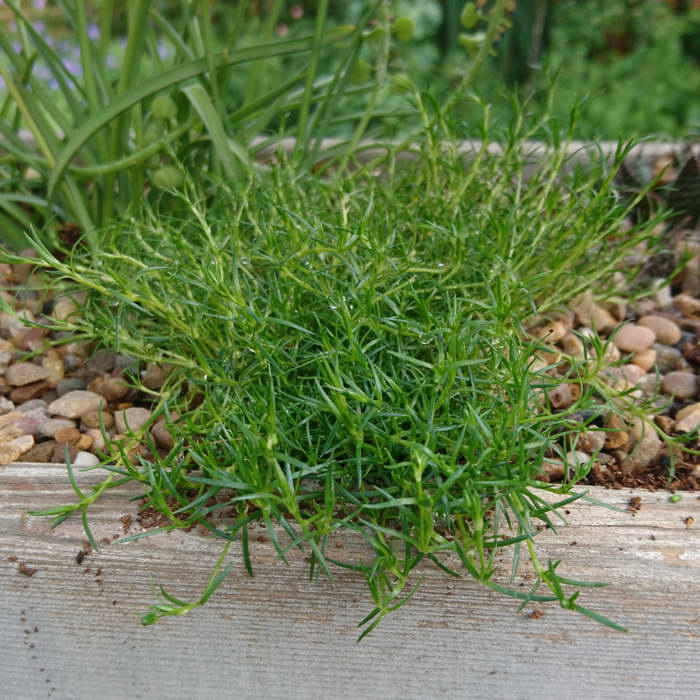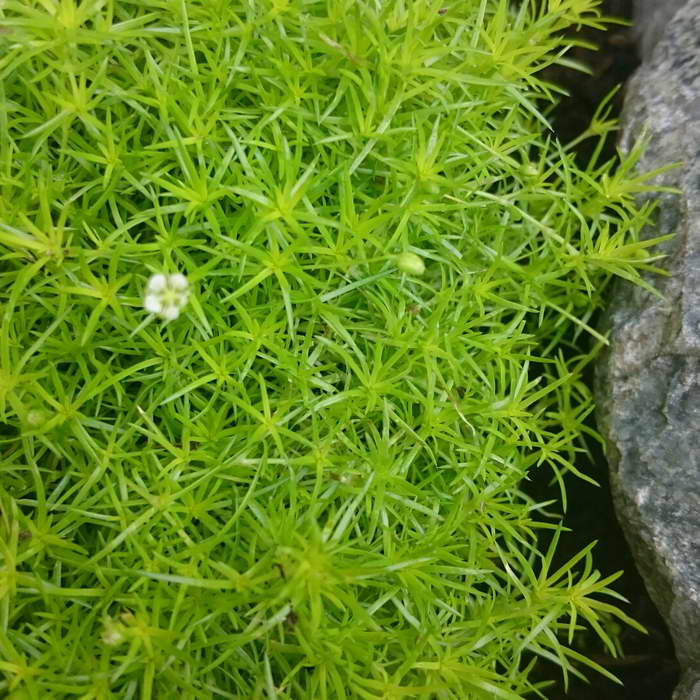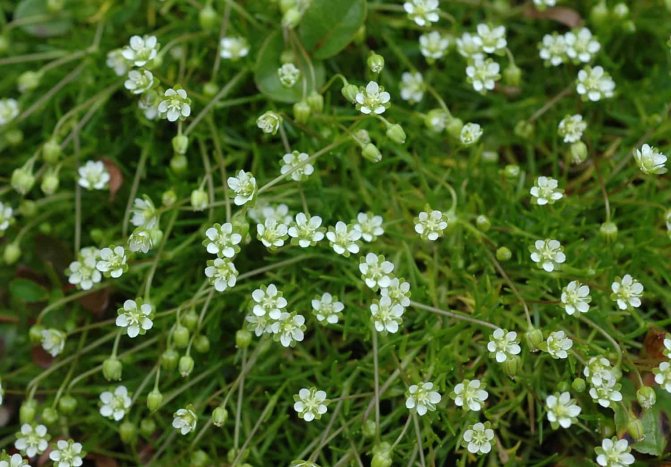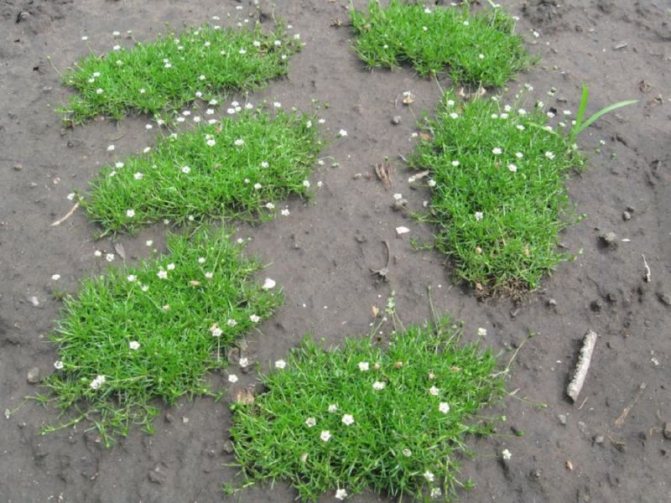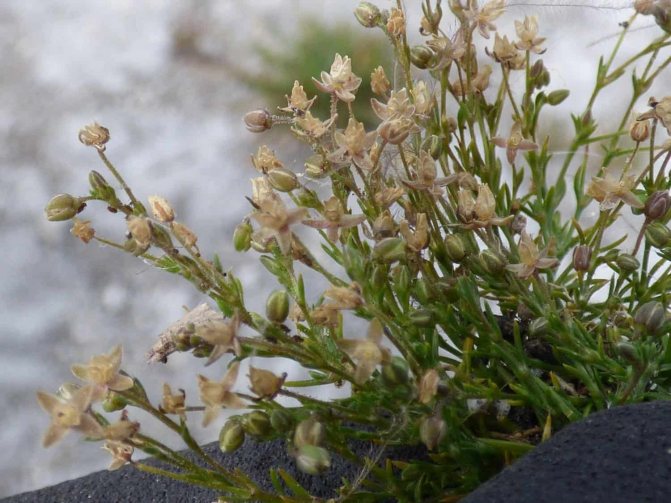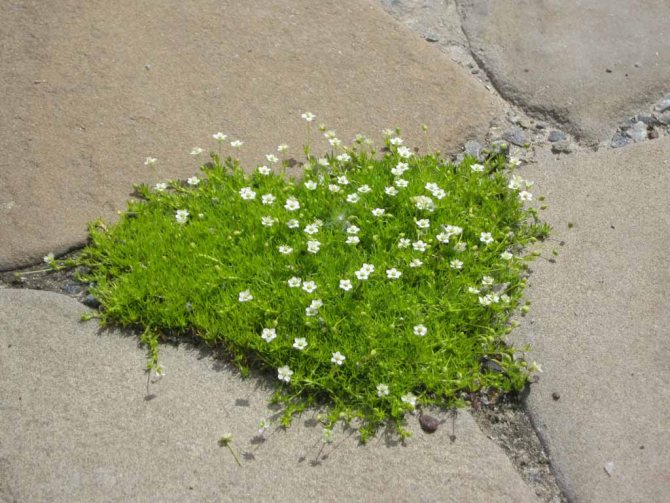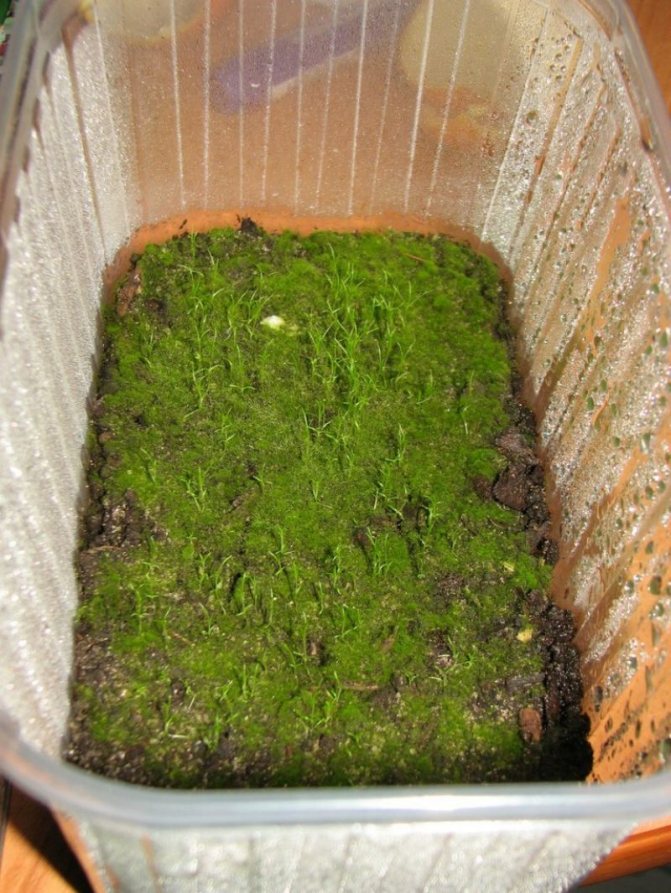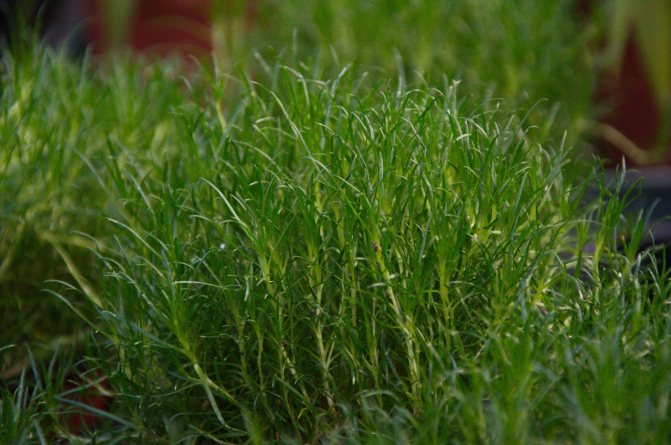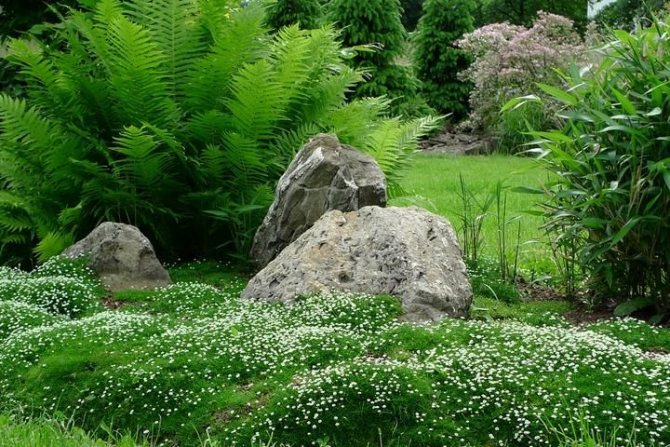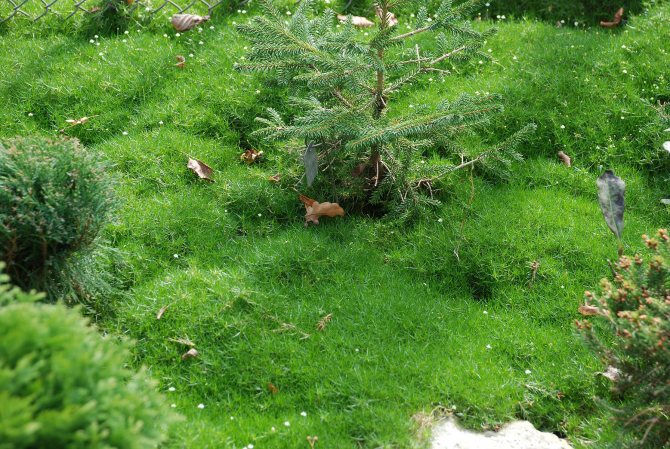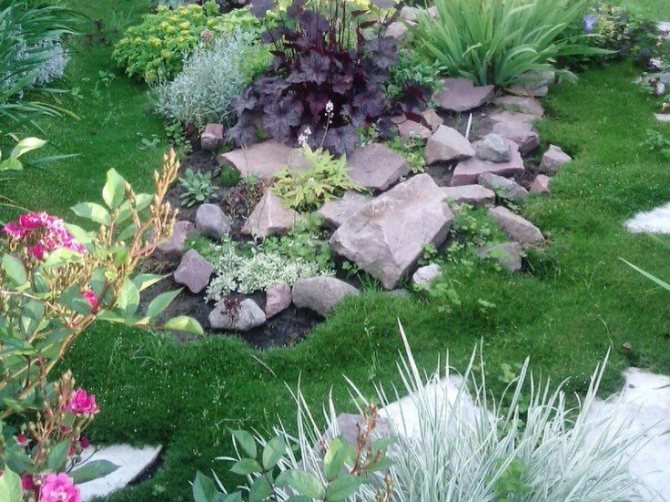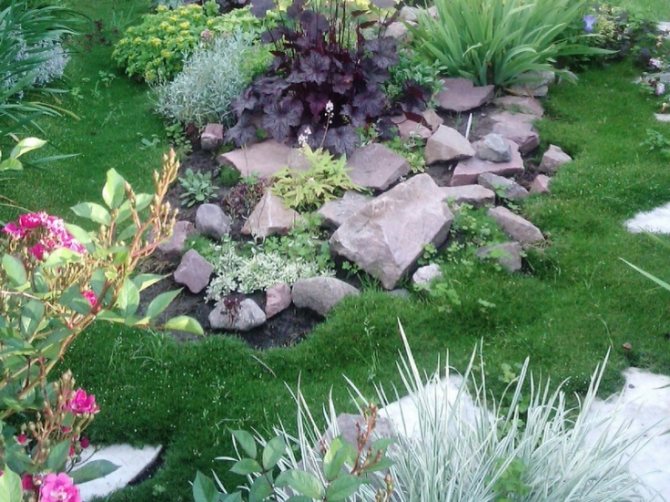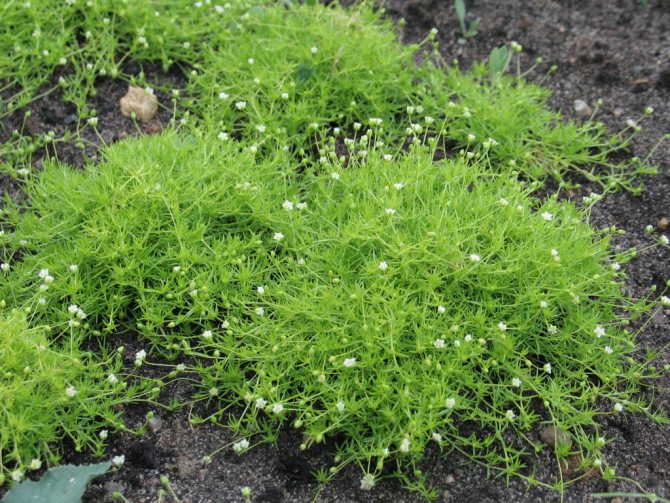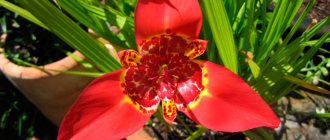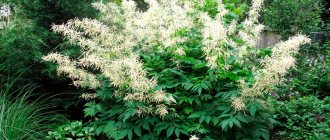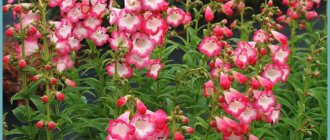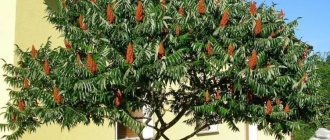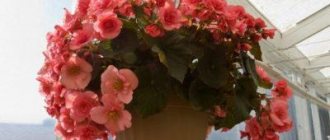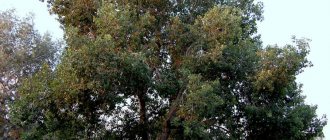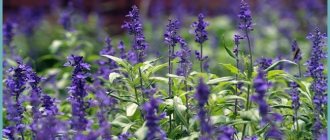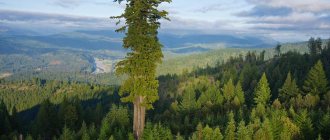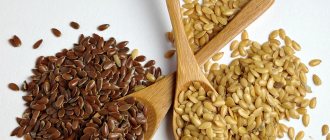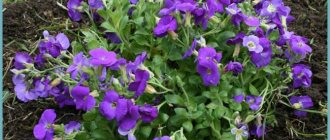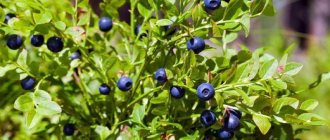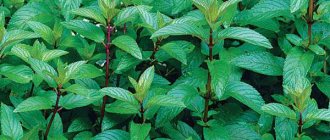Recently, subulate bryozoan has become increasingly popular in landscape design. Or as Europeans call it Irish moss. This garden planting allows you to create an unearthly beauty of the lawn. The culture is very different from the traditional and familiar to many types of grass for the lawn. The organization of the green zone with bryozoan is more like a symbiosis of grass and moss. Reaching, on average, up to 7 cm in height, the plant forms a real emerald cushion. Moreover, Irish moss blooms. Small white flowers stand out on creeping branched stems, frame their tiny leaves in the form of needles. The culture grows very quickly, for which it is also appreciated by gardeners.
Description of the bryozoan subulate
Subulate bryozoan Sagina Subulata is a flowering plant with a herbaceous structure. Belongs to Grozdny crops and has about 50 species. This perennial forms small herbaceous pads that are visually very similar to moss. During flowering, its luscious greenery is covered with small beautiful flowers, forming a blooming carpet.
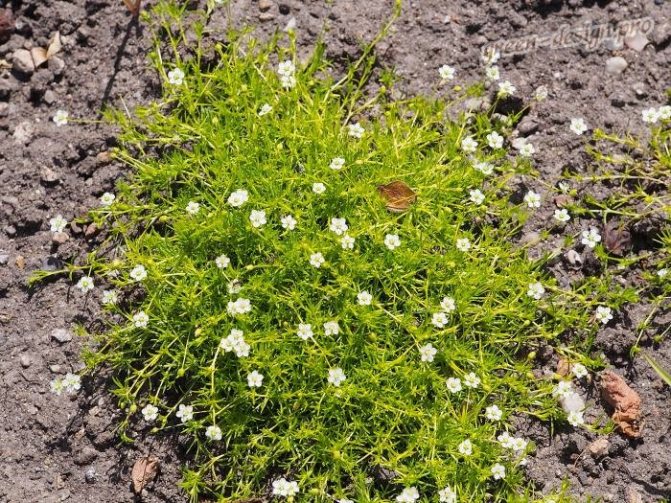
Flowering bryozoan subulate
The plant is evergreen, its stems are highly branched, creeping can reach 10 cm in length. The leaves are very small, their length can reach 5-6 mm, the shape is oblong, needle-like. Leaves cover the shoots of the plant abundantly, forming a soft bush. The flowers are snow-white, small. Located at the tops of branches, they have a delicate, delicate aroma. Abundant flowering, lasts from July to September. After flowering, small seed pods are formed, which contain a large number of small seeds.
What types are there?
In total there are more than 50 types of bryozoanscommon on almost all continents. On the territory of Russia, 12 species of this plant are most common, among which three of them deserve special attention:
- bryozoan, the shoots of which are densely covered with small needle-shaped leaves of light green color. This variety grows slowly, while forming quite dense thickets. Bryozoan bryozoan blooms in early summer;
- recumbent... The homeland of this variety is Eurasia. It is distinguished by small leaves and nondescript flowers. It grows equally well, both in the light and in the shade. This species is considered a weather resistant weed;
- subulate. The homeland of this variety is Western Europe. A perennial plant with dense, evergreen bryophyte pillows. The subulate bryozoan blooms in July-September.
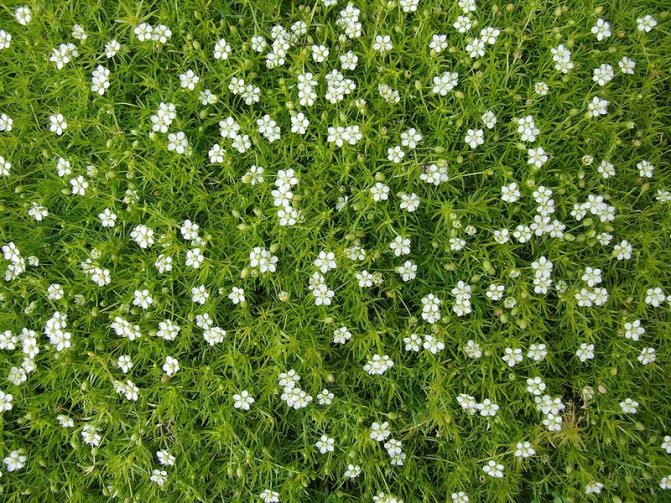

In the photo, bryozoan subulate
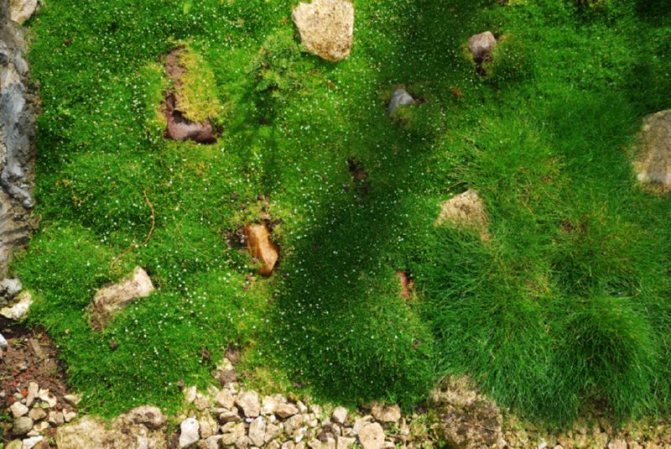

Care of the styloid bryozoan
Having become the proud owner of this beautiful greenery in the garden, you should familiarize yourself with its preferences and the basics of care, which will allow you to grow beautiful, eye-pleasing grass. Due to the unpretentiousness of the plant, the care procedures are simple and do not take much time. The culture can grow in a shaded area, partial shade, and in a sunny meadow. It is not demanding on the composition of the soil, however, it does not tolerate excessive moisture.
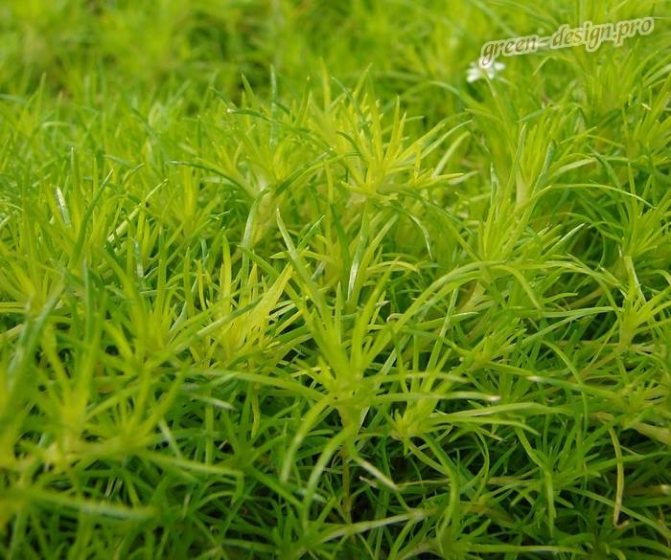

Because of the dislike for the abundance of moisture, it is better not to plant it in lowlands, where rainwater accumulates. Also, to improve moisture exchange in the soil, it is worth adding a small amount of sand to it. Other care features:
- Watering. Moisturizing should be moderate and regular.In sultry heat, irrigation should be increased, and in cool weather, it should be reduced.
- Soil enrichment. The plant responds well to fertilizing with fertilizers. In the first year after planting, it should be fed with ammonium sulfate. In the future, three times a year (in spring, summer and autumn), the grass should be fertilized with superphosphate and potassium fertilizers. They form resistance to frost in the plant, it is not its growth and the splendor of the bushes that have a beneficial effect.
- Weeds. When caring for a bryozoan, you periodically need to remove weeds that prevent it from growing, as well as loosen the ground to improve air permeability.
Some of the gardeners argue that it is beneficial to walk on the plant. This helps to strengthen its branches, makes it more resistant. It is worth noting that walking on the grass crushes its branches and leaves traces on it that will be visible for a couple of weeks. Therefore, in order not to spoil its visual beauty, it is better to place tiles or pebbles on the lawn. Then the plant will not crumple, and grows in rounded mounds. If the design of the garden assumes a flat surface of the grassy cover, then you need to walk in the greenery. When walking, the mounds are flattened, the grass is evenly leveled.
In winter, in the absence of snow and the presence of severe frosts, the root system of the plant may die. You can protect it by covering it with a protective layer of dry compost. It is better to make a protective cover in the fall before the onset of frost, then there will be no need to worry about the condition of the grass in winter.
Breeding conditions
For cultivation, loam or a mixture of peat, sand and turf soil are best suited. It should be neutral or slightly acidic, as well as retain moisture well, but at the same time not allow an excess of it, since the roots of the bryozoan can rot.
The plant loves sunny areas or partial shade. In constant shade, it will grow much more slowly. In addition, it hardly blooms in the shade.
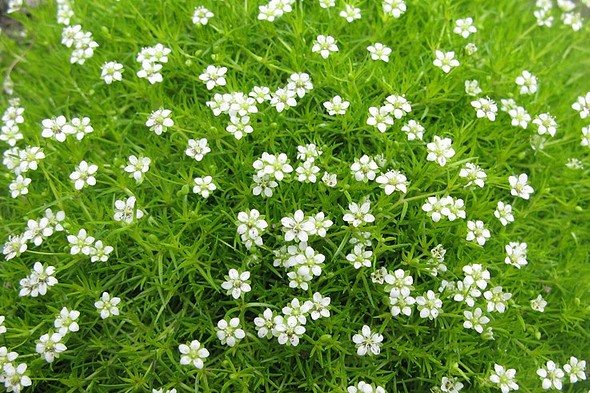

The bryozoan is unpretentious in leaving. Particular attention should be paid to watering. In the absence of rain, it is recommended to carry it out no more than 2-3 times a week. Despite the fact that it is a moisture-loving plant, it should not be watered too often, otherwise it may die, since it has a shallow root system.
It is better to allow some overdrying of the soil than excess moisture. Sprinkler irrigation can be used for irrigation. And it is better to spend it in the evening so that direct sunlight does not damage the delicate shoots.
Fertilization with complexes with a rich content of microelements is recommended to be carried out monthly.
It is necessary to weed the bryozoan only in the first time after disembarkation. In the future, the bush will densely cover the ground and will not allow weeds to multiply.
Growing bryozoans
You can grow grass through planting seeds or vegetatively. Let's take a closer look at each of these options.
Seed planting
Having a large percentage of similarity, the seeds of the styloid bryozoan germinate quickly. Seeds can be harvested from adult specimens growing in the garden, or purchased from a specialty store. After ripening, the seeds also self-sow well, which does not require additional hassle with planting.
For seedlings, seeds are sown in a container in mid-March. Seed material is evenly sown into a container with moistened soil, covered with foil. The seeds do not need to be covered with soil. They are so small that a layer of soil covered from above can slow down their germination. The first shoots will appear within seven days. Seedlings of the styloid bryozoan develop rapidly. When it gets stronger and grows up a little, it is transplanted into separate containers. It is transplanted to the flowerbed in mid-May, when the weather is warm, the soil warms up enough. After transplanting, you need to carefully care for the grass. It is watered daily so that the young shoots are saturated with nutrients and quickly take root.It is also good to add a little means to strengthen and grow the rhizome during watering.
In this video you can find out how to plant bryozoan seeds
Irish Moss: Outdoor Planting in Autumn
In late summer, early autumn, when the flowers of the plant have faded, adult bushes can be propagated. For this, the division of the mother bush is carried out. The root system of the plant is superficial and very small, branched. To separate it, you need to carefully dig out the bush, divide it into several parts. On the roots, you need to try to leave a maximum of the land in which the plant grew before. Carefully transfer the formed individual bushes, plant in the selected area. When planting in autumn, the crop needs winter protection. You can cover the planting with a special cloth, fallen leaves or straw, which will prevent the roots from freezing in severe frost.
Irish moss planting
Preparing a landing site
Before sowing or planting bryozoan saplings, we select and prepare a place for a lawn that meets the following criteria:
- It should be well lit by the sun: only a slight shadow is permissible.
- It should have light, well-drained soil: if it is heavy, dilute it with sand and compost.
Having chosen a suitable site, we clear it of extraneous grasses, loosen the soil ten centimeters deep and level the place.
How to plant a bryozoan
Before planting a subulate bryozoan or Irish moss and providing it with proper care, you must choose a planting method: seed or seedlings.
Getting Irish moss from seedlings
By planting bryozoans with seedlings, you can create excellent lawns in a short time. In the late autumn or spring, we plant medium-sized sods, previously cut out of the finished lawn, on a loosened, watered and slightly trampled site. We avoid November plantings: the material will not have time to take root and will die. We water the plantings occasionally: frequent watering will rot the plants.
If the area for planting is large, and you do not have enough seedlings, we plant them in a checkerboard pattern. Empty "cells" after 2 months will be overgrown with young shoots, as Irish moss multiplies very quickly.
From seed
Planting bryozoans with seeds involves growing seedlings:
- Choosing the right seeds.
- At the beginning of April, we put fertile moist soil into seedling containers.
- We sow achenes, sprinkle them with earth a little, sprinkle them with snow (it will provide hardening and moistening of the seeds) and cover them with polyethylene.
- After the appearance of needle-like sprouts, remove the film.
- When the seedlings turn into bunches of several needles, we make a pick of the seedlings.
We plant ready-made seedlings in the prepared area in early May every five to ten centimeters. The seedlings will grow quickly and turn the planting site into a luxurious carpet. In the future, the lawn will expand independently - by scattering achenes.
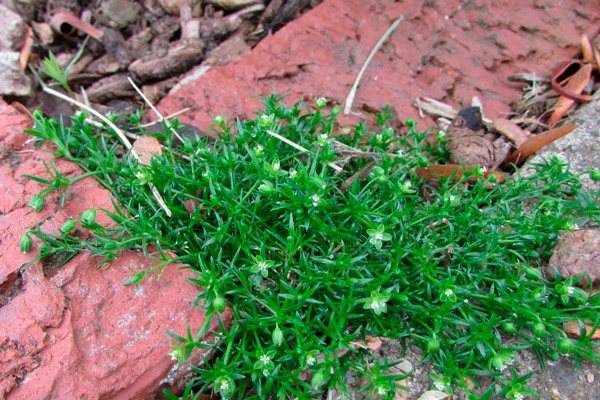

How to plant a bryozoan
Possible growing problems
Difficulties in growing a plant are extremely rare. It is practically not susceptible to diseases and pests. The only thing that can place lush plantings of bryozoans on its site is waterlogging of the root system. With constant stay in a humid environment, fungal infections form on the root system, which lead to the death of the plant. This can be avoided by making a good drainage system before planting, and also observe moderation in watering.
It is extremely rare that aphids can attack the grass. If there is a sticky greenish bloom on the leaves and shoots of the grass, aphids have started up in it. To combat the pest, insecticides are used, which can be purchased in specialized stores.
Diseases and pests
Bryozoans can also be threatened by pests, most often aphids. It may appear due to cabbage planted nearby or an anthill that has arisen. At the first symptoms, it is necessary to process it.You can use folk remedies: a diluted solution of laundry soap or garlic tincture.
In addition, the plant may die due to hypothermia, if it is not hidden in time before winter, or waterlogging, as a result of decay of the root system.
Bryozoan is quite immune to all other plant diseases.
Bryozoan subulate in landscape design
Grass can equally replace moss on lawns, making them not only rich in greenery, but also decorating with abundant, delicate flowering. Irish moss is used to decorate stone and alpine hills, it is good for decorating garden paths. It looks no less interesting in container plantings located in recreation areas.
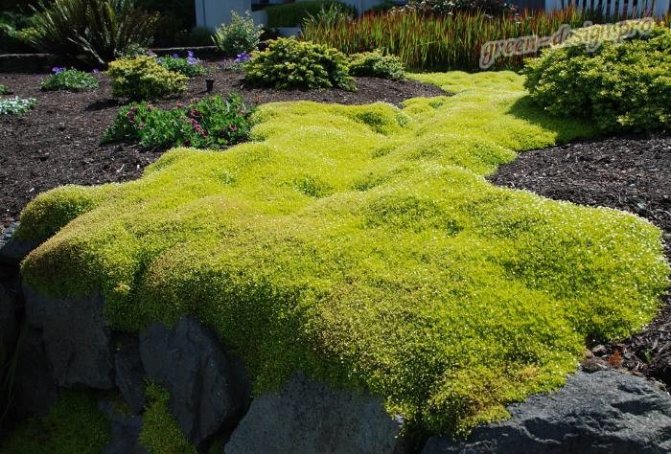

Bryozoan will decorate any corner of your garden in an original way
It will also produce a good lawn that does not need to be mowed regularly. The plant is ideal for creating Irish hills, in which it frames stone boulders and small pebbles.
Thanks to its interesting appearance, the grass is versatile and can become a highlight of any front garden.

